What is in this leaflet
This leaflet answers some common questions about Nivestim. It does not contain all the available information. It does not take the place of talking to your doctor or pharmacist.
All medicines have risks and benefits. Your doctor has weighed the risks of you taking Nivestim against the benefits they expect it will have for you.
If you have any concerns about taking this medicine, ask your doctor or pharmacist.
Keep this leaflet with the medicine. You may need to read it again.
What Nivestim is used for
Nivestim - also known as Filgrastim (rbe) - is a copy of a substance normally present in your body, called Granulocyte Colony Stimulating Factor or G-CSF. Using gene technology, Nivestim is produced in a specific type of bacteria, called E. coli.
G-CSF is produced in the bone marrow and assists in the production of neutrophils, which are a type of white blood cell. Neutrophils help the body fight infections by surrounding and destroying the bacteria that cause them. G-CSF also helps neutrophils to do this work better.
This medicine may have been prescribed for you for one of the following reasons:
-
You are receiving chemotherapy for cancer
Some chemotherapy will reduce the number of white blood cells in your body. Although Nivestim is not a treatment for cancer, it does help the body to make new neutrophils and this will reduce your chance of developing infections that might require antibiotics and/or hospital stays. It may even increase your chance of receiving your chemotherapy on time and at the right dose. -
You are receiving a bone marrow transplant or a stem cell transplant
Blood cells are produced in the bone marrow and arise from special ‘parent’ cells, called stem cells. Some chemotherapy has toxic effects on bone marrow, so your doctor may choose to collect stem cells from your bone marrow or blood – or from a donor’s bone marrow or blood – before you receive your chemotherapy. These collected stem cells are then stored and may be given back to you later, to replace those lost during chemotherapy. This procedure is called a bone marrow or stem cell transplant.
There are normally only a small number of stem cells in your blood; Nivestim is typically used to increase this number before stem cell collection. You may also receive Nivestim after a bone marrow or stem cell transplant, to help speed up your recovery. -
You are donating stem cells for another person
If you are aged between 16 and 60 years and have volunteered to donate your stem cells for another person, Nivestim may be used to increase the number of stem cells in your blood before they are collected. Your stem cells can then be given to a patient after he/ she has received their chemotherapy. -
You are suffering from severe chronic neutropenia
Severe chronic neutropenia is a disease in which the body does not make enough neutrophils, increasing your risk of fever and/ or infection. Nivestim helps the body to make and maintain the right number of infection-fighting neutrophils, decreasing the risk of infection and the need for antibiotics and/or hospital stays. -
You are receiving medicines for HIV infection
Some medicines used to treat HIV (Human Immuno-deficiency Virus) infection, or its complications, can reduce the number of infection-fighting neutrophils in your blood. Your doctor may prescribe Nivestim if the number of neutrophils falls too low.
By boosting your neutrophil count, Nivestim will improve your body’s ability to fight infection and may increase your chance of receiving the full dose of some of your HIV medicines. Nivestim is not a treatment for HIV infection.
Ask your doctor if you have any questions about why Nivestim has been prescribed for you
This medicine is available only with a doctor’s prescription.
There is limited experience with the use of Nivestimin children. Your doctor will discuss the risks and benefits of using it in children.
Before you use Nivestim
When you must not use it
Do not use Nivestim if you have an allergy to:
- filgrastim, or any of the ingredients listed at the back of this leaflet
- medicines or any other products that are produced by DNA technology using the bacteria E. coli.
Some of the symptoms of an allergic reaction may include:
- shortness of breath, wheezing or difficulty breathing
- swelling of the face, lips, tongue or other parts of the body
- rash, itching or hives on the skin
Do not use Nivestim at the same time as your chemotherapy or radiotherapy.
Do not use Nivestim in the 24 hours before or the 24 hours after you receive your chemotherapy, radiotherapy, bone marrow transplant or stem cell transplant.
Do not use Nivestim after the expiry date (EXP) printed on the pack or if the packaging is torn or shows signs of tampering.
Do not use Nivestim if it has been left out of the refrigerator for more than fifteen (15) days, or if it has been in the freezer for more than 24 hours, or if it has been frozen more than once.
If you are not sure whether you should use Nivestim, talk to your doctor or pharmacist.
Before you start to use Nivestim
Tell your doctor if you have any allergies to:
- any other medicines
- any other substances such as foods, preservatives, or dyes.
Tell your doctor if you are pregnant or plan to become pregnant or are breast-feeding or plan to breast feed. Your doctor can discuss with you the risks and benefits involved.
Tell your doctor if you:
- have a medical condition affecting the bone marrow or blood
- have a family history of a genetic disorder
- suffer from sickle cell disease
- have problems with your kidneys, liver, heart or other organs
- have had previous treatment for cancer
- have any infections, cancers or tumours.
- have a recent history of pneumonia (or other serious lung infections).
If you have not told your doctor about any of these things, tell him/her before you use any Nivestim.
Your doctor will decide whether it is safe for you to use Nivestim.
Taking other medicines
Tell your doctor if you are taking any other medicines, particularly those that may affect the blood. Also tell him/her about those you buy without a prescription from a pharmacy, supermarket or health food shop.
Driving and using machinery
The effect of Nivestim on the ability to drive or use machines or tools is not known. Wait to see how Nivestim affects you before driving or using tools or machines.
How to use Nivestim
Follow all directions given to you by your doctor, pharmacist or nurse carefully. They may differ from the information contained in this leaflet.
If you do not understand the instructions, ask your doctor, pharmacist or nurse for help.
Nivestim is given by injection, usually into the tissues just below the skin. This is called a subcutaneous injection and it is a simple procedure.
Your doctor, nurse or pharmacist may suggest that you or your carer be taught how to give a subcutaneous injection. This will allow you to have your Nivestim injection at home.
Nivestim is sometimes given by injection into a vein. This is called an intravenous injection and is generally given by a doctor or nurse.
How much to inject
Your doctor will tell you the strength of Nivestim you need and how much you require. How much you need will depend on the reason for your treatment, your body weight and the number of neutrophils in your blood.
For Nivestim to work properly, you have to use it exactly as your doctor has instructed.
Where to inject
The best injection sites are:
- your abdomen, except for the area around the navel (belly button) or
- the front or side of your thighs.
The sites are shown in the picture below.
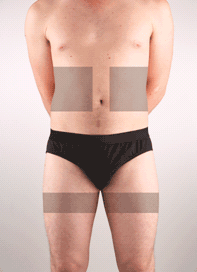
You should change the site of injection each time you inject, to avoid soreness at one site.
When to inject
For the best effect you should inject Nivestim at about the same time each day. Your doctor will tell you when to begin your treatment and when to stop.
How long to use it
Patients receiving chemotherapy or who have received a bone marrow or stem cell transplant are only required to use Nivestim for short periods of time until the number of infection-fighting neutrophils are restored (usually 1 to 3 weeks).
Stem cell donors should receive Nivestim treatment for 4 to 5 days.
Patients with severe chronic neutropenia are required to use Nivestim regularly and for a long period of time, to keep the number of infection-fighting neutrophils at a normal level.
Patients with HIV infection need to use Nivestim daily until their neutrophil numbers are normal. Usually, the dose is then reduced to three injections per week to maintain the neutrophil numbers. Your doctor will tell you how many injections you need each week and on which days they should be given.
Do not use the Nivestim syringe if:
- The carton is open or damaged.
- The needle guard is missing, detached or has been activated.
- The medicine is cloudy or discoloured or the liquid has particles floating in it.
- Any part of the pre-filled syringe appears cracked or broken or any of the liquid has leaked out of the syringe.
- The pre-filled syringe has been dropped. The pre-filled syringe may be broken even if you cannot see the break.
- The needle cover is missing or not securely attached.
- The expiration date printed on the label has passed.
In all cases above, discard the prefilled syringe and use a new prefilled syringe.
Equipment required for administration
Make sure that you have all the materials you need for your injection:
- a new Nivestim pre-filled syringe
- an alcohol swab
- a puncture-resistant sharps container for disposing of used syringes safely.
Things to do before you inject
Follow these instructions exactly to help avoid contamination and possible infection.
If you are unsure, check with your doctor, nurse or pharmacist.
- Find a clean, flat working surface, such as a table, where you can inject undisturbed.
- Remove the carton containing the Nivestim pre-filled syringes from the refrigerator.
- Remove the blister tray containing the pre-filled syringe from the carton. When the carton contains blister trays with more than one pre-filled syringe, tear off the blister tray containing one pre-filled syringe along the perforated part, and return the rest of the blister trays containing prefilled syringes to the carton and return the carton to the refrigerator.
- Open the blister tray containing the pre-filled syringe by peeling away the lid from the blister tray. Remove the pre-filled syringe from the blister tray by grasping from the syringe body.
a. Do not grasp the grey needle cover or the plunger rod.
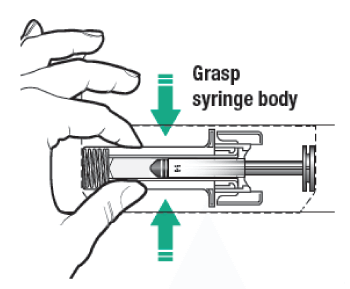
- Check the syringe to make sure that the needle guard is covering the barrel of the pre-filled syringe. Do not push the needle guard over the needle cover before the injection. This may activate or lock the needle guard. If the needle guard is covering the needle that means it has been activated.
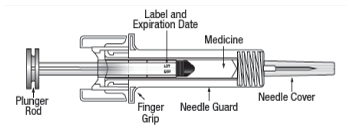
- Check that the solution is clear, colourless and practically free from visible particles. Do not inspect the product through the plastic of the safety device.
- Check the date on the syringe label to make sure that the medicine has not passed the expiry date.
- For a more comfortable injection allow the pre-filled syringe to reach room temperature (approximately 25°C). This will take 15-30 minutes.
a. Do not warm Nivestim in any other way (e.g. do not warm it in the microwave or in hot water).
b. Do not shake the syringe.
c. Do not remove the needle cover until you are ready to inject.
- Make sure you have your puncture-resistant sharps container nearby.
- Wash and dry your hands thoroughly.
How to prepare your injection – Nivestim Ready to Use Syringe
- Hold the pre-filled syringe by the body of the needle guard with the needle cover pointing up – this helps reduce the amount of medicine that may leak out of the needle.
a. Do not hold by the plunger head, or plunger or needle cover.
b. Do not pull back on the plunger at any time.
c. Do not remove the needle cover from the pre-filled syringe until you are ready to inject your medicine.
- Carefully remove the needle cover by holding the barrel and pulling the cover straight off and away from your body carefully without twisting it. Throw away the cover. Do not recap the needle. Do not push the plunger or touch the exposed needle or shake the syringe.
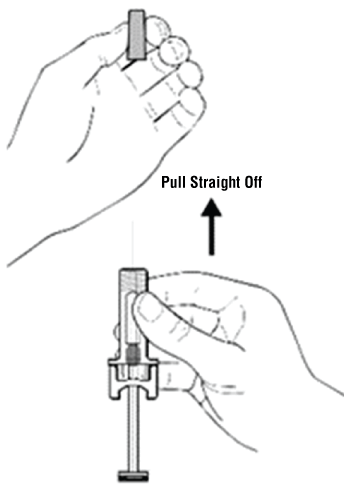
- Check the dose (in mL) that your doctor has prescribed and locate the correct volume mark on the syringe barrel. Carefully push the plunger until the grey upper edge of the plunger reaches the correct volume mark. This will push the air and any excess liquid out of the syringe.
- Double-check that you have the correct dose.
How to inject
- Clean the site where the injection is to be made with an alcohol swab, moving the alcohol swab in an expanding circle and allow the site to dry.
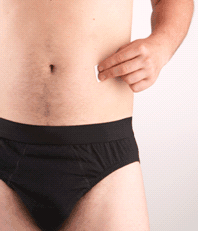
- Pinch a large area of skin between your thumb and forefinger, to create a firm injection site.
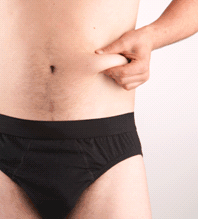
- With your other hand, pick up the pre-filled syringe and hold it as you would a pencil.
- Use a quick "dart-like" motion to insert the needle directly into the skin (at an angle of 45° or as advised by your doctor, nurse or pharmacist).
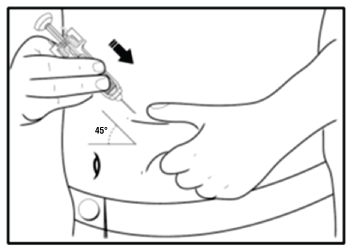
- After the needle is in, pull back the plunger very slightly. If blood comes into the syringe, the needle has entered a blood vessel. Remove the needle.
- Select another site, clean the new site with an alcohol swab and reinsert the needle. Again, pull back the plunger very slightly to check for blood. If blood does not appear in the syringe you are ready to inject.
- Gently push down the plunger until all the contents of the prefilled syringe have been emptied.
- Withdraw the needle and using the alcohol swab apply pressure for several minutes to the injection site.
- Do not put the needle cover back on the used syringe. You cannot reuse the syringe.
- Ensure needle guard covers the needle according to instructions for Active Needle Guard or Passive Needle Guard below.
- Discard the used syringe into an approved, puncture-resistant, sharps container.
Use of Active Ultrasafe Needle Guard for Nivestim 120 µg/0.2mL solution for injection
The pre-filled syringe has an UltraSafe Active Needle Guard attached in order to protect from needle stick injury. When handling the pre-filled syringe, keep hands behind the needle.
- Perform the injection using the technique described above.
- When you have completed the injection, slide the needle guard forward until the needle is completely covered (device ‘clicks’ into place).

Use of Ultrasafe Passive Needle Guard for Nivestim 300 µg/0.5mL solution for injection and Nivestim 480 µg/0.5mL solution for injection
The pre-filled syringe has an UltraSafe Passive Needle Guard attached in order to protect from needle stick injury. When handling the pre-filled syringe, keep hands behind the needle.
- Perform the injection using the technique described above.
- Depress the plunger while grasping the finger flange until the entire dose has been given. The passive needle guard will NOT activate unless the ENTIRE dose has been given.
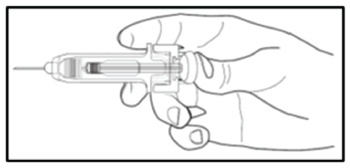
- Remove needle from your skin, then let go of the plunger and allow syringe to move up until the entire needle is guarded and locks into place.
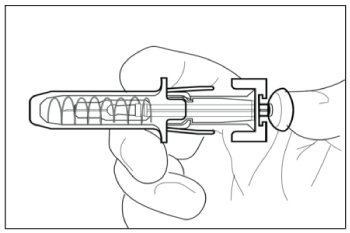
Do not change the dose or the way you inject Nivestim without consulting your doctor. Always follow your doctor’s instructions.
If you forget to use your injection
If you miss your scheduled dose, inject it as soon as you can – provided that it is still on the same day.
If you miss a whole day before you remember to inject yourself, do not take a ‘catch-up’ dose or increase your next dose. Advise your doctor, nurse or pharmacist as soon as possible about the missed dose.
If you use too much (overdose)
If you inject more than the dose recommended by your doctor you should contact your doctor, nurse or pharmacist immediately.
Too much Nivestim may lead to neutrophil levels that are too high. Research has shown that doses almost 15 times greater than the most common dose do not immediately result in any harmful effects.
Immediately telephone the Poisons Information Centre (telephone 13 11 26) for advice, or go to Accident and Emergency at the nearest hospital, if you think that you or anyone else may have taken too much Nivestim. Do this even if there are no signs of discomfort or poisoning. You may need urgent medical attention.
While you are using Nivestim
Things you must do
Be alert for any signs or symptoms of infection. There are many ways an infection may show itself.
You should watch for:
- fever (a temperature of 38.2°C or greater, or as your doctor suggests)
- chills
- rash
- sore throat
- diarrhoea
- earache
- difficult or painful breathing, coughing or wheezing.
If you develop any of these symptoms, go straight to your hospital.
If you are about to be started on any new medicine, tell your doctor, nurse and pharmacist that you are using Nivestim. Tell any other doctors, dentists and pharmacists who treat you that you are taking this medicine.
If you become pregnant during treatment with Nivestim, tell your doctor immediately.
Keep all of your doctor’s appointments so that your health can be monitored. Treatment with Nivestim leads to changes in the numbers of certain blood cells. Your doctor may order blood tests to check the levels of infection-fighting neutrophils and other blood cells. Blood tests may also be undertaken after you have completed your Nivestim treatment until your blood cells have returned to normal levels.
Things you must not do
Do not use Nivestim to treat any other complaint unless your doctor tells you to.
Do not give Nivestim to anyone else, even if they have the same condition as you.
Side effects
Tell your doctor as soon as possible if you have any problems while using Nivestim, even if you do not think the problems are connected with the medicine or are not listed in this leaflet.
Like other medicines, Nivestim may have unwanted side effects. Some side effects may be serious and need medical attention. Other side effects are minor and are likely to be temporary. You may also experience side effects caused by other medicines you are taking at the same time as Nivestim.
Do not be alarmed by this list of possible side effects. You may not experience any of these side effects.
Ask your doctor or pharmacist to answer any questions you may have.
If any of the following happen, stop taking Nivestim and go straight to hospital, as you may need urgent medical attention:
- pinkish, itchy swellings on the skin, also called hives or nettle rash
- swelling of the face, lips, mouth or throat which may cause difficulty in swallowing or breathing
- shortness of breath
- light-headedness, dizziness or fainting
- wheezing
- rapid pulse, sweating.
If you experience any of these symptoms, you may have a serious allergic reaction to NEUPOGEN.
Severe allergic reactions to Nivestim are very rare.
Tell your doctor immediately if you notice any of the following:
- pain in the upper left side of the abdomen
- left shoulder pain
- dizziness
- coughing up blood or mucus
- fever, chest or abdominal pain, malaise and back pain. These could be symptoms of inflammation of your aorta (the large vessel that transports blood from your heart to your body). Tell your doctor if you experience these symptoms.
The above list includes serious side effects that may require medical attention.
Tell your doctor if you notice any of the following and they worry you.
Some of these are known side effects of chemotherapy and may not be related to Nivestim:
- temporary bone pain, such as in the lower back or in the long bones of the arms or legs. This pain is usually relieved with non-prescription painkillers, like paracetamol. If you continue to have bone pain even after having taken this form of pain relief, you should speak to your doctor, as you may need a prescription medication.
- abdominal discomfort
- bleeding or bruising more than usual, severe nose bleeds, reddish or purplish blotches under the skin
- blood in the urine
- cough, breathlessness
- diarrhoea
- hair loss
- headache
- joint pain or worsening of existing arthritis
- muscle pain
- redness, swelling or itching at the site of injection
- skin disorders – worsening of existing symptoms
- skin rash or red, itchy spots
- sore mouth, mouth ulcers
- tiredness, looking pale
Tell your doctor, nurse or pharmacist if you notice anything that worries you or that is making you feel unwell, even if it is not on this list.
Other side effects not listed above may occur in some people.
After using Nivestim
Storage
Keep Nivestim in a refrigerator at a temperature of 2°C to 8°C. Brief exposure to freezing temperatures (up to 24 hours) will not harm Nivestim, nor will exposure to room temperature for up to fifteen (15) days in a single period.
Do not use Nivestim if it has been left out of the refrigerator for more than fifteen (15) days, or if it has been in the freezer for more than 24 hours, or if it has been frozen more than once.
Keep Nivestim in its carton protected from light.
Do not store Nivestim or any other medicine in the bathroom or near a sink. Do not leave it on a window sill or in the car. Heat and dampness can destroy some medicines.
Keep it where children cannot reach it. A locked cupboard at least one-and-a-half metres above the ground is a good place to store medicines.
Disposal
Once you have injected Nivestim, do not put the needle cover back on the used syringe.
Put the used syringe into an approved, puncture-resistant, sharps container. Dispose of the full puncture-resistant sharps container as instructed by your doctor, nurse or pharmacist.
Never put used syringes into your normal household rubbish bin.
If your doctor tells you to stop using this medicine or the expiry date has passed, ask your pharmacist what to do with any medicine that is left over.
Product description
What it looks like
Nivestim is a clear, colourless solution and is supplied as ready-to-use syringes.
The single use, preservative-free syringes are packed in cartons of 1, 5, or 10 and are available in the following strengths:
- 120 micrograms of filgrastim in a volume of 0.2 mL;
- 300 micrograms of filgrastim in a volume of 0.5 mL;
- 480 micrograms of filgrastim in a volume of 0.5 mL.
Ingredients
The active ingredient in Nivestim is filgrastim. Other ingredients are:
- water for injections
- sodium
- acetate
- sorbitol
- polysorbate 80.
Nivestim does not contain lactose, gluten, tartrazine or any other azo dyes.
Each pre-filled syringe is affixed with a needle closed by a needle cover that contains epoxyprene, a derivative of natural rubber latex which may come into contact with the needle.
Supplier
Nivestim is supplied by:
Pfizer Australia Pty Ltd
Sydney, NSW
Toll Free number:
1800 675 229
www.pfizer.com.au
Australian registration numbers
120 µg/0.2mL AUST R 160106
300 µg/0.5mL AUST R 160108
480 µg/0.5mL AUST R 160107
Date of preparation
This leaflet was prepared in May 2023.
® = Registered Trademark
Published by MIMS June 2023
